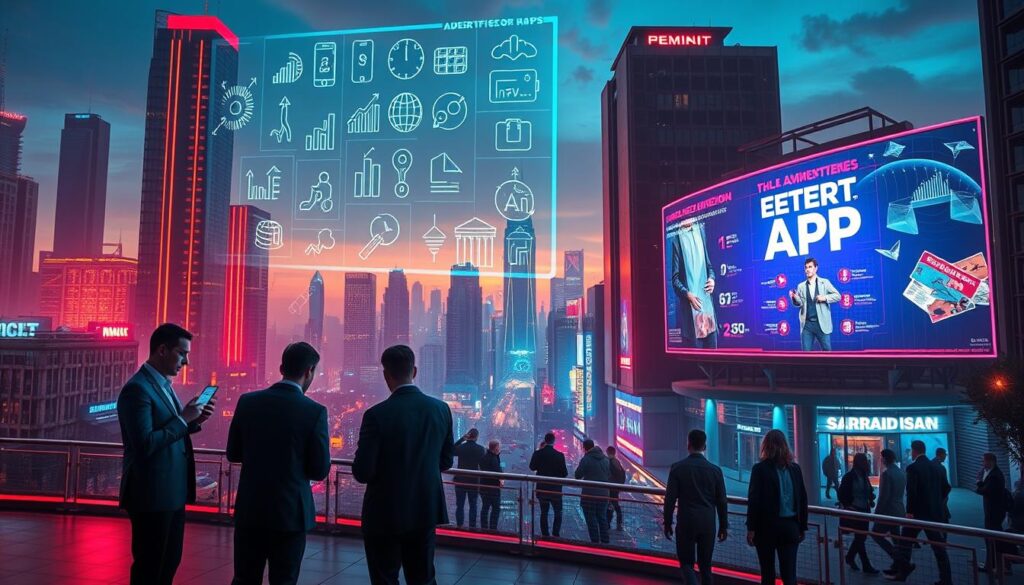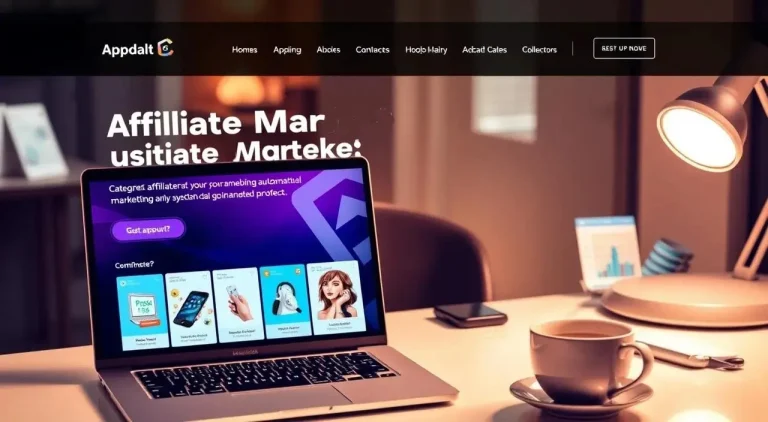Best Money Making Apps 2025: Top Picks for Earning
Earn Extra Cash Money-Making Apps: Top Side Hustle Ideas for Americans
In the economy, for the best money making apps, many Americans are exploring creative ways to boost their income. A recent NerdWallet study shows 1 in 10 adults started a side business this year to cover essential expenses. Digital tools now offer practical solutions for those seeking extra cash without full-time commitments.
This guide highlights platforms that turn spare time into earnings. Whether you prefer freelance gigs, selling handmade goods, or passive income streams, modern technology creates opportunities for nearly every skill set. We’ve analyzed user demographics, payout structures, and time requirements to help you find the right fit.
Financial experts note that diversification remains crucial in uncertain markets. Our research focuses on services with proven track records and low entry barriers. From ride-sharing to digital marketplaces, these options adapt to various schedules and expertise levels.
Key Takeaways
- 10% of U.S. workers now supplement their income through side ventures
- Digital platforms cater to both active and passive earning styles
- Earning potential varies by time investment and skill requirements
- Multiple entry points exist for beginners and experienced users
- Platform security and payment reliability are prioritized in our selections
Side Hustle with Your Smartphone: Top Money-Making Apps for 2025
Earning potential now fits in your pocket with innovative solutions transforming smartphones into versatile income generators. These platforms blend flexibility with modern tech, catering to diverse skill sets and schedules. A recent Pew Research study found 43% of U.S. adults use at least one digital tool to supplement their primary earnings.
Today’s options extend far beyond basic survey sites. Users can create content, offer specialized services, or rent unused assets through intuitive interfaces. Advanced algorithms match opportunities to individual strengths, while automated systems handle payments and task tracking. This evolution makes earning accessible during commutes, lunch breaks, or weekends.
Artificial intelligence plays a crucial role in personalizing experiences. Apps analyze user behavior to suggest high-value tasks and predict earning patterns. Time management features help balance these activities with other responsibilities, maximizing productivity without burnout.
Choosing suitable platforms requires understanding your goals. Some prioritize quick cash through microtasks, while others reward long-term skill development. Entry barriers have lowered significantly – many require only a smartphone and basic digital literacy to start earning within hours.
Understanding the Side Hustle Boom
Economic pressures are reshaping how workers approach income generation. Nearly 1 in 3 adults now balances multiple income sources, according to Federal Reserve data. This shift reflects both necessity and evolving workplace preferences.
Insights from Recent Surveys
NerdWallet’s research reveals 10% of Americans began supplementary work this year. Financial insecurity drives this trend, with median side earnings covering 23% of household expenses. Younger workers lead the charge – 68% of Gen Z report active side projects.
Trends in Freelancing and Gig Economy
Specialized fields dominate growth areas. Computer security roles surged 27.1% last quarter as cyber threats multiply. Content creation remains vital, with companies seeking writers who refine AI outputs and optimize SEO performance.
| Industry | Growth (2024) | Key Skills |
|---|---|---|
| Cybersecurity | 27.1% | Threat analysis, network protection |
| Content Creation | 18.4% | SEO editing, AI collaboration |
| App Development | 15.9% | Mobile optimization, UX design |
Remote gig platforms now offer professional services like legal consulting and financial planning. This expansion creates opportunities for people with advanced degrees to monetize their expertise flexibly. Many find these arrangements provide better work-life balance than traditional roles.
Exploring the Best Money-Making Apps 2025
Digital earning tools have evolved beyond basic functionality to become sophisticated income-generating ecosystems. Modern solutions prioritize intuitive design and frictionless workflows, helping people convert skills into earnings faster than ever.
Core Features of Top Performers
Leading platforms combine three critical elements: streamlined navigation, multiple earning channels, and instant payment processing. User retention rates increase by 40% when apps simplify task completion and reward tracking, according to recent UX studies.
These tools now offer built-in learning modules to help users maximize their efforts. Interactive tutorials explain how to identify high-value opportunities based on location, expertise, and available time slots. Many incorporate community forums where members share proven strategies.
| Feature | User Benefit | Industry Standard |
|---|---|---|
| Multi-Payout Options | Flexible cash-out methods | 2-5 business days |
| Skill Matching | Relevant task suggestions | Basic filters |
| Progress Analytics | Earnings optimization | Basic totals |
Transparency remains a key differentiator. Real-time dashboards show exact commission rates and payout timelines. This clarity helps users avoid platforms with hidden fees or complex reward structures.
Many services now integrate with financial apps, allowing automatic transfers to savings accounts or investment portfolios. This seamless connection between earning and money management creates a complete financial ecosystem for ambitious users.
Monetization Models in Mobile Apps
Smartphone platforms have transformed into sophisticated revenue engines through diverse earning strategies. Developers now combine multiple approaches to balance user experience with steady income streams. The global shift toward hybrid models reflects changing consumer habits and market demands.

Ads, In-App Purchases, and Subscriptions
Advertising remains a cornerstone of free applications. Targeted promotions generate 62% of total revenue for lifestyle tools while keeping core features accessible. In-app purchases let users unlock premium content or virtual goods, creating instant cash flow.
Subscription services thrive in education and fitness markets. Monthly fees provide predictable income for creators and continuous value for subscribers. Research shows retention rates improve by 34% when apps offer tiered membership options.
Hybrid Monetization Strategies
Leading platforms blend three key elements to maximize earnings:
| Model | User Benefit | Developer Advantage |
|---|---|---|
| Ad-Supported | Free access | High user base |
| Premium Purchases | Custom upgrades | Immediate profits |
| Subscriptions | Ongoing value | Recurring income |
Gaming applications exemplify this approach. Free-to-play titles now earn $57.64 per user annually through cosmetic items and battle passes. Partnerships with external brands add another layer, letting users redeem rewards across services.
Successful platforms analyze usage patterns to adjust their mix. This flexibility helps maintain engagement while scaling revenue streams. The future lies in models that adapt to individual preferences without overwhelming choices.
High-Earning App Categories and Niches
Mobile platforms now dominate specific market segments through specialized features and targeted user engagement. Emerging leaders combine addictive mechanics with smart monetization, creating sustainable revenue streams while maintaining user satisfaction.
Gaming and Entertainment Apps
The gaming sector continues breaking records, with players spending $57.64 annually on average per title. Virtual cosmetics and exclusive content drive 68% of these purchases. Successful titles maintain 160 active monthly users through regular updates and community events.
Entertainment platforms thrive by offering tiered access. Free users get basic content, while subscribers unlock ad-free viewing and early releases. This model balances broad accessibility with premium perks, keeping conversion rates above industry averages.
Social Media and Lifestyle Apps
Established networks capture 83% of total social media revenues through influencer partnerships and shoppable posts. New entrants struggle but find niches through hyper-local features or unique content formats. Micro-communities focusing on specific hobbies show particular promise.
Lifestyle tools combine multiple income strategies effectively:
| Monetization Type | User Adoption | Revenue Share |
|---|---|---|
| Subscriptions | 42% | 55% |
| In-App Purchases | 37% | 30% |
| Brand Partnerships | 21% | 15% |
Fitness trackers and meal planners lead this space, offering personalized recommendations through AI analysis. Their hybrid approaches ensure a steady income while adapting to shifting consumer preferences.
Freelance and Testing Apps for Supplemental Income
Global talent networks and quality assurance platforms now let professionals monetize expertise during spare hours. Over 73 million Americans engaged in freelance work last year, with 52% reporting higher satisfaction than traditional employment.

Skill Monetization Through Digital Channels
Leading platforms like Upwork and Fiverr connect specialists with clients needing specific tasks completed. Approval processes typically take 24-48 hours, requiring portfolio samples or skill assessments. Once approved, users can bid on projects ranging from logo design to software development.
“Building a niche specialization tripled my hourly rate within six months,” notes Sarah K., a top-rated UX designer on Freelancer.com.
Testing applications offer another streamlined path. UserTesting compensates users $10-$60 per session for app feedback, while TryMyUI focuses on website usability reviews. These platforms:
- Require sample tests to demonstrate attention to detail
- Provide clear guidelines for effective feedback
- Offer flexible scheduling around existing commitments
| Platform | Approval Time | Avg. Earnings | Payment Methods |
|---|---|---|---|
| Upwork | 48 hours | $25-$150/hr | Direct deposit, PayPal |
| UserTesting | 24 hours | $10-$60/test | Visa gift cards, PayPal |
| Fiverr | Instant | $5-$500+ per gig | Bank transfer, Fiverr Balance |
Success hinges on optimizing profiles with relevant keywords and client testimonials. Many freelancers report 20-35% income increases after completing platform-specific certification courses. Regular activity boosts visibility in search algorithms, leading to more offers.
Maximizing Earnings with Digital Products and Self-Publishing
Creative professionals are discovering lucrative opportunities by packaging their knowledge into sellable formats. The digital marketplace now offers tools to transform expertise into income streams that work while you sleep. Over 53% of content creators report earning more from digital goods than traditional employment, according to recent Creator Economy reports.
Turning Your Expertise into Digital Goods
Platforms like Gumroad simplify product creation for first-time sellers. A popular cookbook example generated $1,800+ monthly at $39 per copy through 47 verified purchases. Design tools like Canva help non-experts craft professional layouts without costly software.
Amazon’s Kindle Direct Publishing remains a top choice for authors, offering 70% royalties on $2.99-$9.99 eBooks. Successful sellers focus on niche topics with clear customer demand, updating content quarterly to maintain relevance.
| Platform | Product Types | Royalty/Earnings | Key Features |
|---|---|---|---|
| Gumroad | eBooks, courses | 90% + payment fees | Instant payouts |
| Etsy | Printables, guides | 83% after fees | Built-in audience |
| Kindle Direct | eBooks | Up to 70% | Global distribution |
| Canva | Templates | 100% profit | Free design tools |
“My weekly planner outsold physical products 3-to-1 after switching to digital formats,” shares Lauren T., a top Etsy seller since 2022.
Effective marketing strategies include email list building and social media previews. Customers value clear benefit statements – focus content on solving specific problems rather than general advice. You’ll also discover higher conversion rates when bundling complementary products like course videos with downloadable worksheets.
Affiliate Marketing and Blogging via Mobile Platforms
Mobile technology reshapes how creators monetize their influence through strategic partnerships. Over 43% of digital entrepreneurs now use affiliate programs as primary income sources, according to recent marketing surveys. This approach turns audience engagement into measurable revenue when readers purchase recommended products.
Building Partnerships Through Trusted Networks
Leading platforms like ShareASale and Rakuten Advertising connect creators with 4,000+ brands across industries. Amazon Associates remains popular despite its 60-day payment delay, offering 1-10% commissions on qualifying purchases. FlexOffers attracts users with instant access to 12,000+ campaigns and weekly payouts.
| Network | Payout Schedule | Brand Options |
|---|---|---|
| Amazon Associates | 60 days post-month | 20 million+ products |
| ShareASale | Monthly | 4,200 merchants |
| Rakuten | Net-30 terms | Luxury retailers |
Visual platforms drive the most conversions. Pinterest generates 3x more referral traffic than other social media for lifestyle bloggers. Instagram Stories with swipe-up links achieve 12% click-through rates when paired with authentic product demonstrations.
“Sharing genuine reviews boosted my conversion rate from 2% to 8% in six months,” says Marissa L., a parenting content creator with 50K followers.
Mobile optimization requires bite-sized content. Successful creators use:
- Vertical videos showing quick product uses
- Link-in-bio tools for instant access
- Clear FTC disclosures in first-screen captions
Analytics tools help refine strategies by tracking top-performing content types. Monthly earnings often scale with consistent posting schedules and audience feedback integration.
Creative Marketplaces: Etsy, Gumroad, and More
Artisans and creators now access global audiences through intuitive platforms that simplify selling physical and digital goods. These marketplaces remove traditional barriers like inventory storage and payment processing, letting creators focus on their craft.
Selling Crafts and Digital Products Online
Etsy connects makers with 95 million active buyers, offering flexible payout schedules from daily to monthly. The platform welcomes sellers aged 13+, though minors must follow specific guidelines. For digital creators, Gumroad provides instant access to global customers with quarterly payment options after reaching four earnings milestones.
Successful sellers use these strategies:
- Optimize listings with 5-7 high-resolution images
- Use SEO-friendly titles containing specific materials or techniques
- Update inventory weekly to boost search rankings
Mobile apps help manage shops efficiently. The Etsy Seller app allows users to respond to messages, track orders, and analyze sales trends. Gumroad’s mobile version lets creators upload new products during spare moments.
| Platform | Key Feature | Payout Frequency |
|---|---|---|
| Etsy | Handmade focus | Daily-Weekly-Monthly |
| Gumroad | Digital products | Weekly-Quarterly |
Top performers treat their shops like businesses. They track expenses, monitor customer feedback, and test pricing strategies. As one full-time seller notes: “Consistency matters more than perfection – regular updates keep your shop visible.”
Gaming Apps: Revenue Through Fun and Engagement
Mobile games are rewriting the rules of digital entertainment while creating income streams for developers and players alike. By 2027, over 137 million people in the U.S. will regularly play smartphone games – an 8% increase from current figures. This growth fuels innovation in how games generate revenue while keeping players engaged.
Free Access, Strategic Spending
The free-to-play model dominates modern mobile gaming. Developers build massive audiences by removing upfront costs, then monetize through cleverly designed features. Players spend an average of $57.64 annually per game through optional upgrades and time-saving purchases.
Three elements drive most in-game transactions:
| Purchase Type | User Motivation | Revenue Share |
|---|---|---|
| Progression Boosts | Faster advancement | 42% |
| Virtual Currency | Exclusive items | 35% |
| Limited Offers | Scarcity effect | 23% |
Rewarded video ads provide alternative earning paths. Players voluntarily watch 30-second promotions to gain extra lives or premium currency. This approach maintains gameplay flow while generating income from advertisers.
“Our players appreciate having choices – they can pay with time or money based on their preferences,” explains Mark R., lead designer at a top studio.
Successful titles carefully balance monetization and enjoyment. Daily login bonuses and achievement rewards keep free users engaged, while premium subscribers receive ad-free experiences and exclusive content. This hybrid approach sustains long-term player bases across age groups and skill levels.
Finance, Fitness, and Mental Health Apps for Steady Income
Modern smartphone tools now address holistic well-being while creating reliable revenue streams. Three sectors stand out for combining user value with sustainable business models: personal finance, physical wellness, and emotional health support.
Subscription Models and Data Insights
Financial management platforms demonstrate strong market demand. 40% of global users pay for features like automated budgeting and investment tracking. These services thrive on recurring payments, with premium tiers offering tax optimization tools and real-time portfolio alerts.
The fitness app market hit $6.86 billion this year, growing nearly 10% annually. Users spend $17.84 monthly on average for customized workout plans and progress analytics. Successful platforms use activity data to suggest personalized challenges, keeping engagement high.
Mental health tools show the fastest growth at 15.2% yearly. Meditation leaders like Calm leverage subscription bundles combining sleep stories and stress management courses. Their $40 average revenue per user could reach $60 as demand increases for AI-powered mood tracking features.
These sectors prove that value-driven models outperform one-time purchases. By focusing on long-term user benefits, developers build loyalty while maintaining predictable income streams.
FAQ About Money-Making Apps
How do apps generate revenue through user engagement?
Many apps use ads, in-app purchases, or subscriptions. For example, gaming apps like Roblox combine free access with premium upgrades. Social platforms like TikTok reward creators through ad revenue sharing or tipping features.
Which platforms are trending for freelance work in 2025?
A: Upwork and Fiverr remain popular for project-based gigs. Newer apps like TaskRabbit focus on local services, while testing platforms like UserTesting pay users to review apps or websites.
Can gaming apps provide a steady income stream?
Yes, but earnings depend on engagement. Games with play-to-earn models, such as Axie Infinity, let users trade in-game assets. Others reward players through surveys or watching ads during gameplay.
What strategies work for selling digital products effectively?
Platforms like Gumroad or Etsy allow creators to sell eBooks, templates, or art. Successful sellers often use social media to promote their work and offer limited-time discounts to boost sales.
How do affiliate programs integrate with social media platforms?
Apps like Amazon Associates or Shopify Collabs let users share product links via Instagram or TikTok. Creators earn commissions when followers make purchases through their unique referral codes.
Are subscription models effective for fitness apps?
Yes. Apps like Peloton or MyFitnessPal use tiered subscriptions to offer premium workouts or diet plans. Users pay monthly for exclusive content, creating predictable revenue for developers.
What role does user data play in app monetization?
Data helps apps personalize ads or content. For example, Spotify uses listening habits to recommend playlists, while fitness apps might share anonymized data with health brands for targeted marketing.
Which creative marketplaces are growing in popularity?
A: Etsy dominates handmade crafts, while Creative Market caters to digital designers. Platforms like Redbubble let artists upload designs for print-on-demand products without inventory costs.
What risks come with relying on in-app ads for revenue?
Overloading apps with ads can frustrate users, leading to uninstalls. Balancing ad frequency with rewards—like bonus content in exchange for watching a video often works better for retention.
How do hybrid monetization models benefit app developers?
Combining ads, subscriptions, and one-time purchases diversifies income. For example, Duolingo offers free lessons with ads but charges for an ad-free experience and advanced features.







